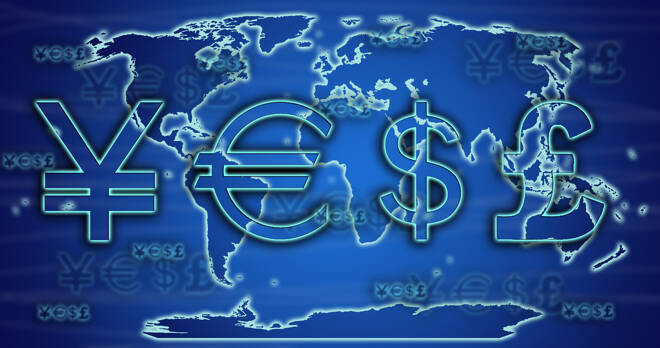Advertisement
Advertisement
Economic Data Put the EUR and Dollar in the Spotlight, with ECB President Lagarde also in Focus
By:
It's a relatively quiet day on the economic calendar. Stats from France and the U.S and ECB President Lagarde will draw attention in the day.
Earlier in the Day:
It’s was a relatively busy start to the Day on the economic calendar this morning. The Aussie Dollar was in action, with economic data from the China also in focus.
For the Aussie Dollar
In February, the Westpac Consumer Sentiment Index rose by 1.9% to 109.1. In January, the index had fallen by 4.5% to 107.0. Economists had forecast a 1.0% increase.
Sentiment remained strong in February, which is key to a more positive outlook on consumer spending.
According to the latest Westpac Report,
- The upside in February came following January’s pullback from a 10-year high in December.
Looking at the sub-indexes:
- Family finances vs a year ago slipped by 0.6% to 88.8. By contrast, family finances next 12-months rose by 2.6% to 111.4. The sub-index was also up by 12.4% year-on-year.
- The economic conditions next 12-months jumped by 6.9% to 109.8 and was up by 22.9% year-on-year.
- Sentiment towards employment conditions also improved. The Unemployment Expectations Index fell by 3.8% to 114.5 and was down by 15% year-on-year.
The Aussie Dollar moved from $0.77380 to $0.77413 upon release of the figures that preceded inflation figures from China. At the time of writing, the Aussie Dollar was down by 0.12% to $0.7730.
From China
Inflation figures were in focus.
In January, deflationary pressures returned. Consumer prices fell by 0.3%, year-on-year, reversing a 0.2% rise from December. Economists had forecast a 0.1% decline.
Month-on-month, however, consumer prices rose by 1.0% following a 0.7% increase in December. Economists had also forecast a 1.0% rise.
Wholesale inflationary pressures returned in January. The producer price index rose by 0.3%, year-on-year, partially reversing a 0.4% decline from December. Economists had forecast a 0.4% increase.
The Aussie Dollar moved from $0.77282 to $0.77300 upon release of the figures.
Elsewhere
At the time of writing, the Japanese Yen was down by 0.07% to ¥104.66 against the U.S Dollar, with the Kiwi Dollar down by 0.19% to $0.7228.
The Day Ahead:
For the EUR
It’s another relatively quiet day ahead on the economic calendar.
Finalized German inflation figures for January and French industrial production figures for December are due out.
Expect the French industrial production figures to have the greatest impact on the EUR.
On the monetary policy front, ECB President Lagarde is also scheduled to speak later in the day.
At the time of writing, the EUR was down by 0.04% to $1.2114.
For the Pound
It’s another quiet day ahead on the economic calendar, with no material stats due out of the UK.
The lack of stats will continue to leave the Pound in the hands of COVID-19 news updates and market risk sentiment.
At the time of writing, the Pound was down by 0.04% to $1.3811.
Across the Pond
It’s a relatively quiet day ahead on the economic calendar. January inflation figures are due out of the U.S later today.
Barring particularly dire numbers, we don’t expect the stats to have a material impact on the Dollar.
Away from the economic calendar, chatter from Capitol Hill will continue to influence.
At the time of writing, the Dollar Spot Index was up by 0.09% to 90.523.
For the Loonie
It’s another quiet day on the economic data front, with no material stats to provide the Loonie with direction.
The lack of stats will leave the Loonie in the hands of crude oil inventory numbers on the day.
At the time of writing, the Loonie was down by 0.09% to C$1.2705 against the U.S Dollar.
For a look at all of today’s economic events, check out our economic calendar.
About the Author
Bob Masonauthor
With over 28 years of experience in the financial industry, Bob has worked with various global rating agencies and multinational banks. Currently he is covering currencies, commodities, alternative asset classes and global equities, focusing mostly on European and Asian markets.
Advertisement
